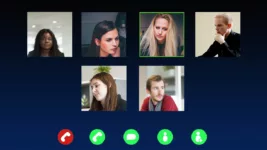There are effectively three major video conferencing platforms in the market: Cisco WebEx, Microsoft Teams, and Zoom. Zoom is currently the most at risk as we adjust to the new post-pandemic normal because the company is the smallest of the three and has the least synergy with anything else. That doesn’t mean it is a bad tool. If you don’t need interoperability or a great deal of security, it might still be your best choice. Microsoft Teams is a bundled tool that integrates well with other Microsoft efforts and is particularly useful for software developers. It’s expected to be the most aggressive with generative AI going forward which, eventually, could be a game changer for the segment. WebEx comes from Cisco, the only truly blended telecom/computer company. It is arguably the most secure and has a high affinity for Cisco’s networking offerings in terms of being able to ensure performance. It tends to be favored where security and reliability are more important than cost or collaboration. To be fair, collaboration isn’t the strength of any of these tools. They’re generally more communication- than collaboration-based.
As for security, Cisco recently announced a feature that would watermark audio, and as an ex-departmental CSO, security auditor, and ex-lead of a security service, it is that aspect that currently fascinates me. Let me explain why.
The need for audio watermarking (and watermarking in general)
Back when I was a department CSO, one of my highly classified reports was stolen, and the leak cost us our largest customer. The then SVP of sales wanted my head on a platter and aggressively moved to have me fired. But I’d instituted a watermarking process that only I knew about (operating under the law that the only way to keep a secret is not to share it with anyone). So, when I got the document back, I was able to trace it to the SVP who wanted me fired. I should add that this confidential report clearly showcased that the SVP’s policies had resulted in huge numbers of lost sales. Apparently, he’d conceived of this plan to get me fired and had been working with one of our largest competitors in secret to harm our company. The connection put him on a fast track out of the company and saved my job (I even got an award for the effort). So, I’m a big fan of watermarking.
When you do watermarking right, you create an evidentiary trail that can be tracked back to whoever leaked the information. While there are ways around watermarking, if the leaker isn’t aware of the watermark, they don’t know to remove it. Watermarking works well with visual formats like pictures, videos, and documents. But we also share information verbally, and someone leaking a vocal conversation can do as much or more damage than leaking a document if the speaker is credible.
We also have a new risk with regard to speech. AI tools can duplicate both the appearance and voice of someone with high enough accuracy to fool a relative. That’s problematic because a person could be charged with fabricated video evidence and have a great deal of difficulty proving it wasn’t them on the video. Even if they proved it wasn’t them, there remains the risk that what the other person, or persons, saw would still damage your reputation.
However, if your voice is watermarked secretly and that watermark is computer-generated using an algorithm not widely known, you could not only track an actual leak back to the leaker but use the watermark to showcase that the questionable audio or video didn’t come from you. In addition, there are tools that can detect a high percentage of these fake audio and video files, but the tools tend to lag the tools that create these videos which keeps them from being 100% effective. But if visual watermarks are annoying, messing with the sound could be just as annoying and might keep people from using the tool.
Cisco’s WebEx watermarking
Initially, Cisco’s Webex Watermarking capability sounds like a light background buzz in the audio file. You can hear it, but it would generally be covered up by the voice of the speaker or the ambient noise in the room. You must work to hear it. In addition, it has encrypted information contained within it that provides information on the content’s origin. For instance, who the recipient was and when the audio was transmitted.
It is certainly possible that with noise reduction tools and awareness that this watermarking tool had been used, a leaker might be able to remove the watermark, but if they were caught with a non-watermarked recording that initially was watermarked, they might be found guilty of leaking information even though it would be harder to connect them to any one individual leak. So even removing the watermark has some significant risk associated with it. And, at the very least, the employee caught doing this is likely to be terminated.
But, I think this is only the beginning of this technology as I can see how you could use transformative or generative AI in line with the voice stream to imbed without the audio stream an even more subtle cadence. It would be a tool that would be unique to every user so that their voice would always only be identified if it came from them, not from any deep fake. It would be impossible to remove the watermark without recreating the content. (Say by using the transcript of what was said to create a deep fake copy that would lack the watermark). By the way, I expect that identity theft laws will expand to assure that if this practice isn’t currently illegal, it soon will be.
Wrapping up:
Watermarking saved my job and arguably my career, so I’m a huge fan. But to work ideally, watermarking should be invisible to the recipient of information so that they don’t know to remove it, and it needs to be applied not just to visual information but vocal information as well. That is what Cisco has announced, and while the initial implementation isn’t yet ideal, it is far better than doing nothing, and it is both new enough and hard enough to hear to be very difficult to detect in this first version.
However, advancements in AI capabilities will allow Cisco to advance this tool significantly over time and further allow Cisco to continue to accelerate in advance of its competitors who have had a lower priority for this kind of security. This reaffirms that if security is a high priority, then WebEx may be your best bet for a video conferencing solution.








